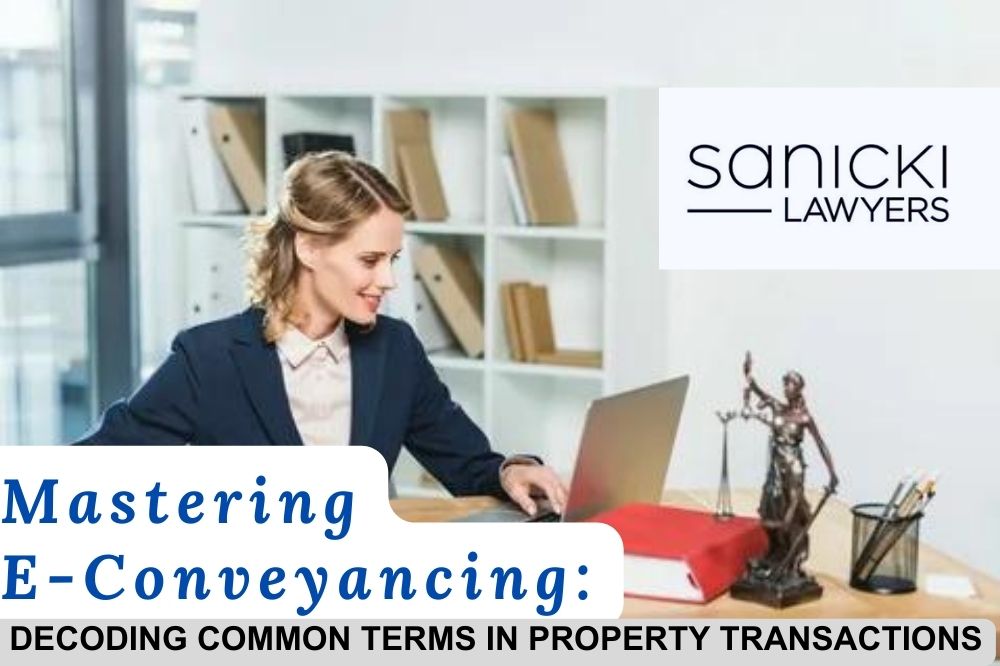In the ever-evolving landscape of real estate, E-Conveyancing stands as a beacon of efficiency, transforming the traditional property transaction process. At Sanicki Lawyers, we delve into the intricacies of this digital revolution, shedding light on common conveyancing terms to empower our readers with a comprehensive understanding.
I. E-Conveyancing Unveiled
E-Conveyancing, short for electronic conveyancing, has redefined how properties change hands. This innovative approach replaces the conventional paper-heavy methods with streamlined, digital processes, ensuring a faster and more secure transaction experience.
II. Key Components of E-Conveyancing
1. Property Verification in the Digital Age
Description: Harnessing digital platforms for verifying property details.
Importance: Guarantees accuracy and transparency in representing the property in the digital realm.
2. E-Contracts: Redefining Documentation
Description: Crafting, distributing, and signing contracts electronically.
Importance: Accelerates the contract process, minimising paperwork and potential delays.
3. Swift Settlement and Lodgment
Description: Digitally settling funds and lodging property documents with relevant authorities.
Importance: Ensures expeditious and precise finalisation of property transactions.
III. Navigating Common E-Conveyancing Terms
1. PEXA (Property Exchange Australia)
PEXA stands as the preeminent electronic platform in Australia for executing property settlements. It serves as a secure hub, facilitating collaboration among buyers, sellers, and Melbourne conveyancers.
2. Verification of Identity (VOI)
The Verification of Identity is a pivotal step in E-Conveyancing, ensuring the authenticity of involved parties. Employing identity verification tools and databases adds an extra layer of security.
3. Digital Signatures: A Secure Imprint
Digital signatures, akin to traditional handwritten signatures, play a vital role in signing essential documents during the E-Conveyancing process. They enhance security and authenticity.
4. Navigating Encumbrances Digitally
In E-Conveyancing, encumbrance refers to claims or restrictions on a property. Digitally recording these details provides a comprehensive overview of the property’s legal standing.
IV. Advantages of E-Conveyancing
1. Enhanced Efficiency
The digitisation of the conveyancing process significantly reduces the time required for property transactions, offering a seamless experience from initiation to completion.
2. Unparalleled Accuracy
The digital nature of E-Conveyancing minimises the risk of errors, ensuring precise representation of documents and property details.
3. Transparent Transactions
All involved parties gain real-time access to the transaction process, fostering transparency, trust, and confidence among stakeholders.
V. Challenges and Solutions in E-Conveyancing
1. Security Concerns in the Digital Realm
Challenge: The digital landscape raises concerns about the security of sensitive information.
Solution: Robust encryption, multi-factor authentication, and secure platforms effectively address security apprehensions.
2. Adoption Hurdles
Challenge: Resistance to transitioning from traditional to digital methods.
Solution: Educational initiatives and awareness campaigns highlighting the benefits and simplicity of the digital process.
Conclusion
E-Conveyancing transcends being merely a technological shift; it represents a revolutionary leap in property transactions. At Sanicki Lawyers, we embrace the efficiency, accuracy, and transparency that E-Conveyancing brings. By demystifying common terms and processes, we empower our readers to navigate property transactions seamlessly in the digital era.





